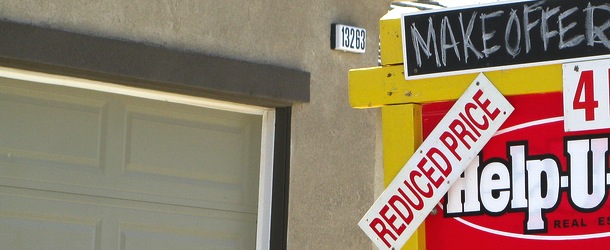A recent podcast from First American economists discussed the current state of the housing market.
The subject was the rebalancing of the housing market, which has been out of whack for a while now.
Over the past several years, it’s been decidedly slanted toward home sellers, who have enjoyed bidding wars and above-asking offers.
As 2023 gets underway, it appears to finally be shifting in the opposite direction, in favor of the home buyer.
But there’s still the question of affordability, and what exactly will happen with mortgage rates and home prices.
1% Drop in Mortgage Rates = 11% Drop in Home Prices
One interesting thing that stood out was the following line: “Today, a one percentage point decline in mortgage rates has the same impact on affordability as an 11% decline in house prices.”
The argument of home prices vs. mortgage rates has been around for years. Most believe it’s a seesaw.
If one goes up, the other must go down, often by an equal amount. But data says otherwise.
In reality, both can move in tandem. For example, it’s possible for both home prices and interest rates to rise if the economy is doing well.
Assuming wages are increasing and the average American is making more, it’s supports home price growth.
But the year 2022 was unlike any other year in history with regard to mortgage rates.
We didn’t see a typical increase in rates, we saw an unprecedented rise in rates.
2022 Was a Very Strange Year for Mortgage Rates
While higher mortgage rates don’t always portend lower home prices, 2022 was a year like no other.
Mortgage rates had never doubled in a calendar year, but they pretty much did in 2022. The popular 30-year fixed began the year at 3.22%, and ended it at 6.42%, per Freddie Mac data.
That was surely enough to dampen home buyer demand, or worse, make folks ineligible for home loan financing.
At the same time, it seemed to lead to a housing market top, thanks to the sheer rise in interest rates.
Typically, you might see mortgage rates rise a percentage point or so in a year, if they’re trending higher.
And if you look at mortgage rates in the 1980s, which were comparatively in a different league (e.g. 18%), the rise back then wasn’t as pronounced.
We’re talking an increase from around 14% to 18.5% in the span of 12 months at its worst in late 1980 to late 1981.
But if you look at that from a percentage increase, it was only about a 36% increase.
As noted, 2022 saw basically a 100% increase in the going rate for a 30-year fixed mortgage.
This is what finally cratered housing demand and led to a shift from seller’s to buyer’s market.
Mortgage Rates Are More Likely to Fall by 1% Than Home Prices by 11%
First American Deputy Chief Economist Odeta Kushi also noted that “rates are much more likely to move by a percentage point than prices are to move by 11%,” historically.
The general idea is that home prices are downward sticky, meaning they rarely fall, though if inflation is strong, real home prices can decline even if nominal prices barely budge.
Either way, it’s much easier for mortgage rates to drop than it is for home prices to take a double-digit dive, even though a lot of folks expect a housing market crash.
And this is especially true now as the current housing market isn’t very similar to the one seen in 2008, when the Great Recession led to scores of foreclosures and short sales.
I’ll repeat what I always say – it’s not your older sibling’s housing market. Today’s mortgages are mostly pristine with locked-in rates in the 2-3% range.
The vast majority of these homeowners aren’t selling, which is why home prices should hold up OK.
Additionally, because mortgage rates have already come down, housing affordability can improve that way, without the need for big home price declines.
The 30-year fixed already rose above 7%, and is now closer to 6%. Some lenders are even quoting low- to mid-5% rates if you pay a couple discount points.
So the balance in the housing market might come from lower mortgage rates, not lower prices.
This allows sellers to command a decent enough price to forget about what their home used to be worth.
And it gives buyers the ability to afford a property, even if their down payment is slightly elevated based on a still-high asking price.
Read more: 2023 Home Buying Tips


